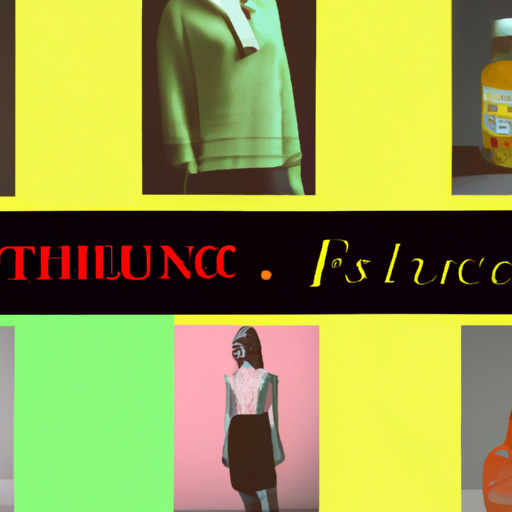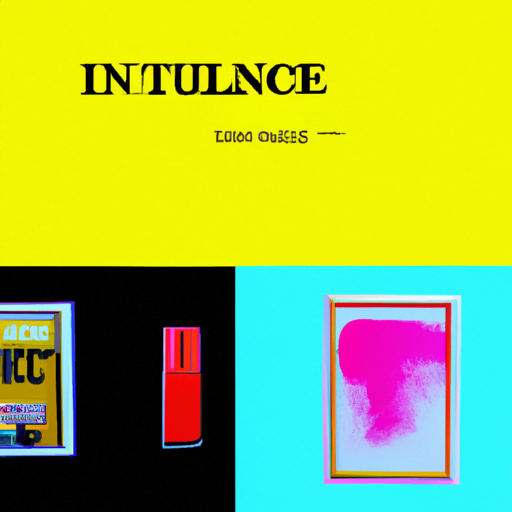
-
Table of Contents
The Influence of Typography in Fashion Lookbooks

Typography plays a crucial role in the world of fashion lookbooks. It is not just about showcasing beautiful garments and accessories; it is also about creating a visual narrative that captures the essence of a brand and communicates its message effectively. In this article, we will explore the influence of typography in fashion lookbooks and how it can elevate the overall aesthetic and impact of a collection.
The Power of Typography
Typography is more than just selecting a font; it is a powerful tool that can evoke emotions, convey meaning, and create a distinct identity. In the context of fashion lookbooks, typography can enhance the storytelling aspect and create a cohesive visual language that resonates with the target audience.
Here are some ways in which typography influences fashion lookbooks:
- Brand Identity: Typography helps establish a brand’s identity by reflecting its personality and values. Whether it’s a bold and edgy typeface for a streetwear brand or an elegant and sophisticated font for a luxury label, typography sets the tone and creates a lasting impression.
- Visual Hierarchy: Typography allows designers to guide the viewer’s attention and create a visual hierarchy within the lookbook. By varying font sizes, weights, and styles, important information such as collection names, product details, and brand messages can be emphasized, ensuring they are noticed and remembered.
- Mood and Emotion: Different typefaces evoke different moods and emotions. A playful and whimsical font can convey a sense of fun and youthfulness, while a clean and minimalist font can evoke a feeling of sophistication and modernity. By carefully selecting the right typography, fashion lookbooks can create the desired atmosphere and connect with the target audience on an emotional level.
Case Studies: Typography in Fashion Lookbooks
Let’s take a closer look at two case studies that demonstrate the influence of typography in fashion lookbooks:
Case Study 1: Chanel
Chanel, a renowned luxury fashion brand, is known for its timeless elegance and sophistication. In their lookbooks, they consistently use a classic serif font that reflects their brand identity. The typography is often paired with high-quality imagery and minimalistic layouts, creating a sense of luxury and refinement. The font’s clean lines and delicate curves complement the garments, enhancing the overall aesthetic and elevating the brand’s image.
Case Study 2: Supreme
Supreme, a streetwear brand with a cult following, takes a completely different approach to typography in their lookbooks. They use bold and impactful typefaces that reflect their urban and rebellious identity. The typography often takes center stage, dominating the layout and creating a strong visual impact. This approach aligns with their target audience and helps establish their brand as a trendsetter in the streetwear scene.
The Role of Typography in Creating Consistency
Consistency is key in fashion lookbooks. Typography plays a crucial role in creating a consistent visual language throughout the lookbook, ensuring that every page feels connected and cohesive. By using consistent fonts, font sizes, and font styles, designers can create a harmonious flow that guides the viewer through the collection.
Typography also helps establish consistency between the lookbook and other brand materials, such as websites, social media posts, and advertising campaigns. By using the same typography across different platforms, brands can reinforce their identity and create a recognizable and memorable presence.
The Impact of Typography on Readability
While aesthetics are important, readability should not be overlooked in fashion lookbooks. The typography should be legible and easy to read, ensuring that the viewer can effortlessly absorb the information presented. Here are some factors to consider for optimal readability:
- Font Choice: Select a font that is clear and legible, even at smaller sizes. Avoid overly decorative or stylized fonts that may sacrifice readability.
- Font Size: Ensure that the font size is appropriate for the medium and audience. Consider the viewing distance and adjust the font size accordingly.
- Contrast: Use sufficient contrast between the text and the background to ensure readability. Avoid light-colored text on a light background or dark-colored text on a dark background.
- Spacing: Pay attention to the spacing between letters, words, and lines. Sufficient spacing improves legibility and prevents the text from appearing cramped.
Summary
Typography plays a significant role in fashion lookbooks, influencing brand identity, visual hierarchy, mood, and emotion. Through case studies, we have seen how different typography choices can reflect a brand’s personality and connect with its target audience. Consistency in typography creates a cohesive visual language, while readability ensures that the information is easily absorbed.
As fashion lookbooks continue to evolve, typography will remain a powerful tool for designers to create impactful and memorable experiences. By understanding the influence of typography and utilizing it effectively, fashion brands can elevate their lookbooks and leave a lasting impression on their audience.
